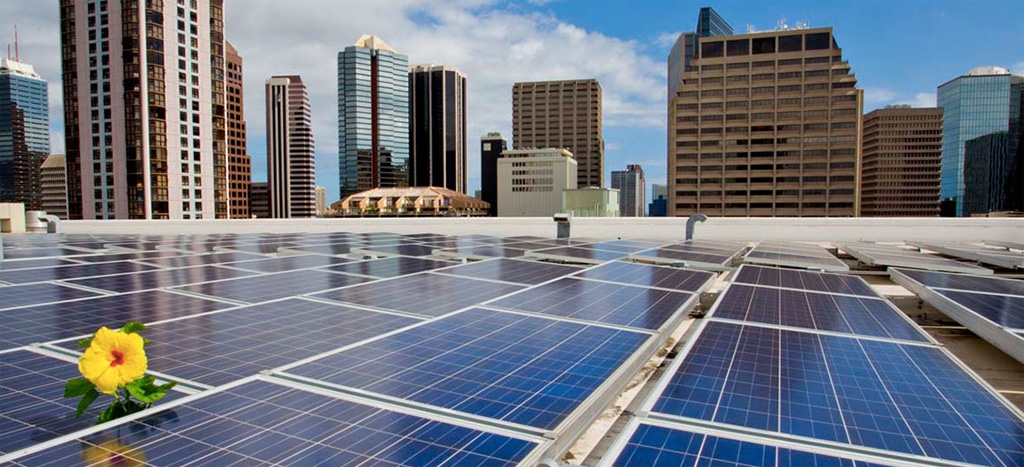Hawaii has been a difficult market for distributed solar during the last few years. In late 2015 Hawaiian regulators shut down the state’s net metering program with little warning, replacing it with two interim programs: a limited “Customer Grid Supply” (CGS) program, that offered a compensation rate lower than retail, and a “Self Supply” program which required a battery system.
Last week Hawaii Public Utilities Commission (HPUC) took another stab at a solution, but instead of setting up definitive policies for post-net-metering compensation for distributed generation, has instead kicked the can down the road again with two more interim programs.
In their details these programs show evolution over the previous set of interim programs, if not a fundamentally different approach. Notably, under the HPUC’s order utilities will be opening up 5,000-6,000 positions under a “Controllable CGS” or “CGS+” program, which will allow customers without battery storage to receive credit for electricity exported to the grid.
And while this is likely a welcome move for customers who want to buy PV but are not up for installing a battery as well, the compensation rates for electricity sent back to the grid are lower than before, ranging from just over 10 cents per kilowatt-hour (kWh) on Oahu to 20.8 cents on Lana’i, as opposed to 15-28 cents/kWh in the previous program.
By comparison, the average price of retail electricity in Hawaii was over 27 cents/kWh in 2016.
The program for customers who install batteries is a somewhat better deal, if limited to a smaller number of customers. Up to 3,500-4,500 customers will be allowed to participate in the “Smart Export” program, as a successor to the “Self Supply” program.
Unlike the “Self Supply” program such customers will be compensated for electricity exported back to the grid, if only during non-daytime hours. However even thought the export times of 4 PM to 9 AM include peak evening demand the non-monetary bill credit is no more generous than the CGS+ credit, and will pay 11-20.8 cents/kWh depending on which island the customer is on.
But these two programs are not everything that the solar industry or potential solar customers would want, they will be a better deal for Hawaii’s utilities and the operation of its grid. To qualify for these two programs customers will need to enable advanced inverter functions including volt-VAR and Frequency-Watt controls. Also, under CGS+ utilities will be allowed to manage power on participating rooftop systems, including curtailing output “when grid conditions require”.
The rub is that these programs are not permanent. CGS+ is designed to accommodate 49 MW of solar PV over three island utilities, and Smart Export 35 MW. Additionally, while credit rates for CGS customers will be grandfathered, this will only last for five years, after which HPUC will be able to alter credit rates for CGS and CGS+ customers.
For the solar industry this may be the most damning part of the order, given there is no certainty for what rate of compensation PV system owners will receive after only five years.
Despite these issues, the order was welcomed by Hawai’i Solar Energy Association (HSEA) and its counsel, Earthjustice, which called it a “ray of light”. However, HSEA also notes that the credit levels represent “bare minimum amounts based only on very short-term utility energy costs.”
“We need to keep on working so that rooftop solar customers can be fully compensated for all the benefits they provide to the grid and the people of Hawaiʻi,” noted HSEA President Rick Reed.
This content is protected by copyright and may not be reused. If you want to cooperate with us and would like to reuse some of our content, please contact: editors@pv-magazine.com.









By submitting this form you agree to pv magazine using your data for the purposes of publishing your comment.
Your personal data will only be disclosed or otherwise transmitted to third parties for the purposes of spam filtering or if this is necessary for technical maintenance of the website. Any other transfer to third parties will not take place unless this is justified on the basis of applicable data protection regulations or if pv magazine is legally obliged to do so.
You may revoke this consent at any time with effect for the future, in which case your personal data will be deleted immediately. Otherwise, your data will be deleted if pv magazine has processed your request or the purpose of data storage is fulfilled.
Further information on data privacy can be found in our Data Protection Policy.